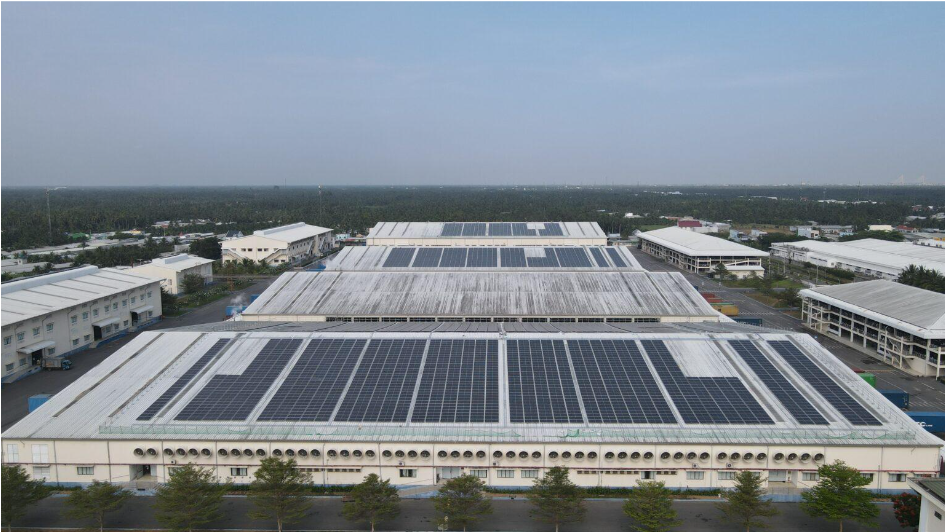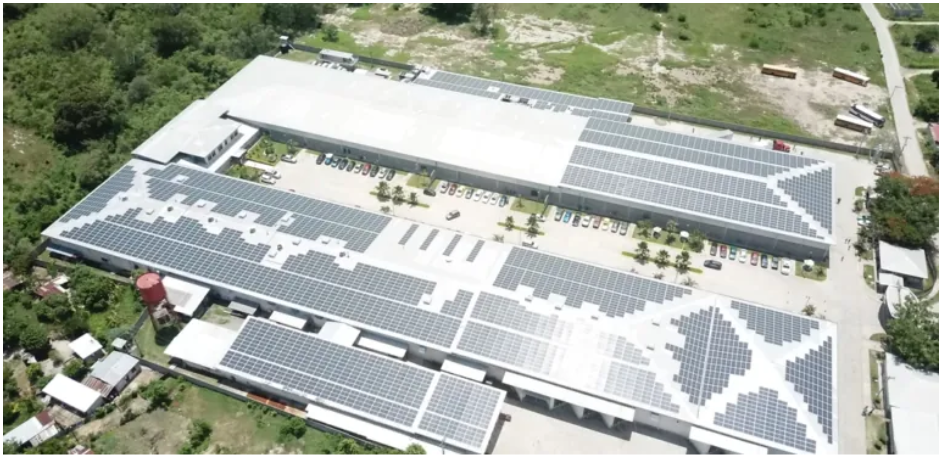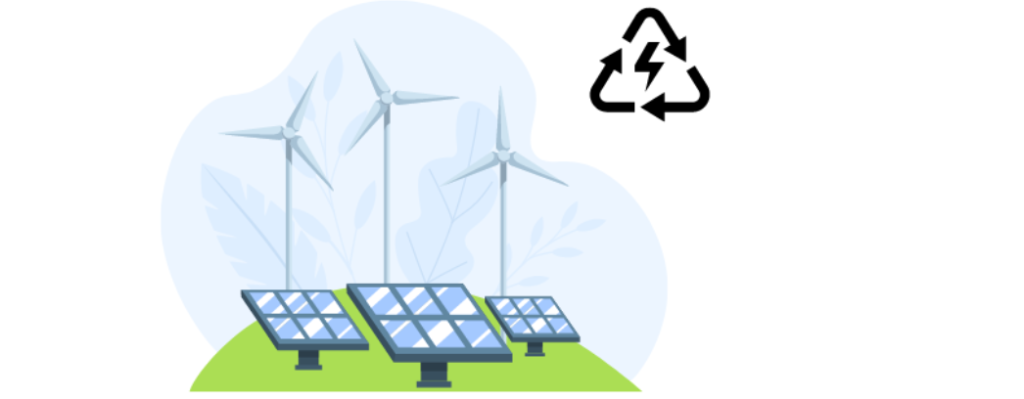The textile industry has long been a cornerstone of the global economy but is one of the most resource-intensive sectors. Traditional textile manufacturing processes heavily rely on non-renewable fossil fuels, leading to extensive environmental damage and a significant carbon footprint. At every stage of production, textile manufacturing relies heavily on electricity, from powering machinery for weaving and knitting to heating water for dyeing and finishing. Textile production is estimated to contribute to 20% of global industrial wastewater and 10% of global carbon emissions, according to a study by the World Bank. This reliance on traditional energy sources such as coal and natural gas is a major contributor to environmental pollution. With growing concerns about climate change and environmental sustainability, the industry is gradually adopting renewable energy solutions, with solar power emerging as a particular alternative. Solar-powered production facilities not only help mitigate the environmental impact of textile manufacturing but also offer substantial economic and social benefits.

The Rise of Solar Power in Textile Manufacturing:
Solar energy adoption in the textile industry has risen remarkably in the past decade. Advancements in solar technology, decreasing costs of solar photovoltaic (PV) systems, and supportive government policies have led to global momentum. According to the International Energy Agency (IEA), the cost of solar PV systems has dropped by over 80% since 2010, making solar energy an increasingly viable option for industrial applications, including textiles. Solar power systems in textile facilities can be categorized into two main types: rooftop solar installations and ground-mounted solar farms. In urban areas, rooftop solar is popular due to limited space, while rural areas usually have ground-mounted solar farms with ample land. Both types of installations present unique benefits and obstacles, yet together, they propel the textile industry toward a more sustainable future.
Benefits of Solar-Powered Production Facilities:
Environmental Benefits:
Switching to solar power in textile production reduces greenhouse gas emissions significantly. For example, MAS Holdings’ Project Photon, which began in 2017, made the company a leader in Sri Lanka’s renewable energy industry. They installed 67,000 solar panels, saving about 18,000 tonnes of CO2 annually which covers an area equivalent to 10 cricket grounds and having the capacity to power around 34,000 households.
Economic Benefits:
The economic advantages of solar power are significant. Although the initial investment for solar power systems can be high, the long-term savings are considerable, with potential reductions of up to 80% in electricity costs. This can result in a return on investment within 5-7 years. Moreover, governments often provide tax credits, rebates, and incentives for adopting solar energy, further boosting its financial appeal. Shahi Exports, the largest apparel exporter in India, invested in two solar power plants with an 84 MW capacity. This investment is expected to save the company around USD 4.7 million annually on electricity bills. Over the 25-year lifespan of the solar panels, the total cost savings could reach over USD 117.5 million.
Social Benefits:
Solar-powered facilities also promote sustainable job creation. Installing and maintaining solar panels create jobs in the renewable energy sector, stimulating local economies. Textile factories typically have vast expanses of unused rooftop space, which presents a perfect opportunity for installing solar panels. By utilizing this untapped resource, companies can generate clean energy on-site, reducing their reliance on the grid and increasing their energy independence. Many governments are introducing regulations that mandate the use of renewable energy. By investing in solar power, textile companies can ensure they are compliant with these regulations and avoid potential penalties. Furthermore, companies that adopt green practices often enjoy enhanced brand reputation and consumer loyalty. In an era where consumers are increasingly environmentally conscious, businesses that prioritize sustainability are more likely to attract and retain customers.
Case Studies of Solar-Powered Textile Facilities Around the World:
India:
India has made significant strides in solar energy implementation in the textile industry. Arvind Limited, a major player in India’s textile sector, has established a 16 MW solar power facility, fulfilling a substantial portion of its energy requirements and cutting down carbon emissions by 20,000 metric tons annually. Another noteworthy illustration is Welspun India, which has incorporated solar power into several facilities, resulting in considerable energy savings and a reduced environmental footprint.
China:
China, the top producer of textiles globally, has also been actively adopting solar energy. H&M’s supplier facilities in Jiangsu province have implemented rooftop solar panels that can generate over 10 MW of electricity, significantly reducing their dependence on coal. The Chinese government has played a crucial role in promoting renewable energy by providing subsidies and favourable policies, which has made solar power an appealing choice for textile manufacturers.
USA:
In the USA, companies like Patagonia are at the forefront of sustainability. It has on-site installations at our Reno, Nevada, and Ventura, California, campuses have installed more than 1.5 megawatts of renewable power. Additionally, Eileen Fisher has implemented solar panels in its Irvington, NY, headquarters, showcasing the feasibility of solar power in smaller, high-value textile operations.
Europe:
European textile manufacturers are also integrating solar power into their operations. In Spain, Textil Santanderina has invested in solar power. Their installation of photovoltaic cells carried out it accounted for electricity production of 804,532 kW in 2023, with plans to double it by 2024-2025, which would mean a reduction in emissions of 400 T eq CO2. An Italian textile company, Canepa has installed a 2 MW solar power system, reducing their energy costs by 60% and their carbon emissions by 1,500 metric tons annually.

Challenges and Solutions of Solar Energy:
Initial Cost:
The high initial investment required for solar power systems serves as a major obstacle for many businesses. However, various financial solutions, such as green loans, power purchase agreements (PPAs), and leasing options, allow companies to spread the cost over time, making solar power more accessible. Government incentives and subsidies can significantly reduce the initial investment, making solar power a financially viable option.
Technological Limitations:
Solar power production depends on the weather and daylight hours, which can cause intermittent energy supply. Combining solar power with renewable sources like wind or battery storage can help ensure a steady energy supply. Advancements in energy storage, such as lithium-ion and flow batteries, allow extra solar energy to be stored for use during periods of low sunlight.
References:
- https://ornatesolar.com/blog/why-textile-industry-clothing-industry-should-go-for-solar
- https://vuphong.com/impressive-textile-factories-rooftop-solar-power-system/
- https://www.fibre2fashion.com/industry-article/9496/the-textile-industry-s-transition-to-renewable-energy
- https://www.indiantextilemagazine.in/indian-textile-companies-harnessing-solar-power-for-sustainable-growth/





We need to the conventional power in our textile industry with renewable power roof solar system